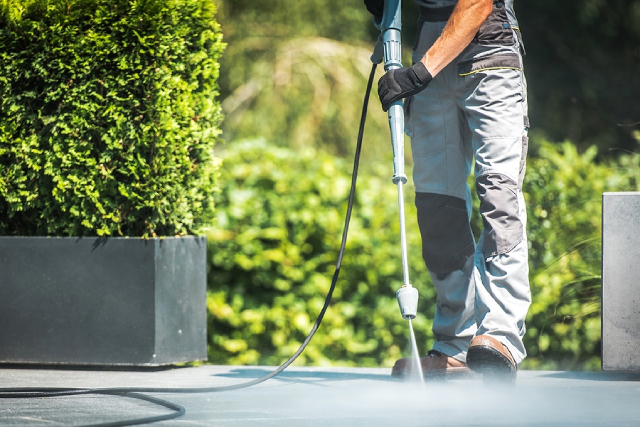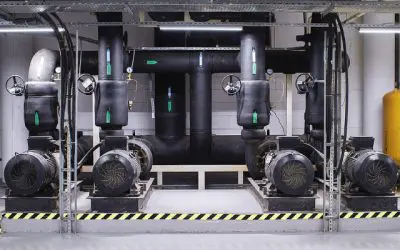
As the final weeks of the year approach, many businesses take the opportunity to review their equipment and plan ahead for the upcoming year. Cleaning machinery is often overlooked during these reviews, yet it plays a crucial role in day-to-day operations across industries such as facilities management, manufacturing, hospitality, construction, automotive care and more. A high-pressure cleaner is one of the most hardworking tools in any cleaning workflow, and year-end is the ideal moment to decide whether it should be serviced or replaced. Making the right decision now can reduce downtime, improve cleaning standards and extend the life of your equipment.
This guide will walk you through the essential considerations that help determine if your cleaner simply needs maintenance or if investing in a new model is the smarter long-term decision. Wherever appropriate, it will also highlight the benefits of newer systems equipped with features such as a high-efficiency pump, as well as situations where the performance of a high-pressure cleaner in Singapore may decline due to heavy use or environmental conditions.
Assess The Performance Of Your Equipment
A thorough evaluation is the first step. Look back at how your machine has performed over the past year. Has cleaning become slower or less effective? If you notice reduced pressure, inconsistent spray patterns, vibrations or louder-than-usual operating noise, these could indicate internal wear. Many operators gradually adjust to small changes without realising that efficiency has dropped, so it helps to compare the machine’s current behaviour with how it performed when new.
You should also assess the frequency of use. High-pressure cleaners that operate daily or are used in harsh environments often experience faster wear than those used occasionally. If your equipment is part of a production line or commercial cleaning schedule, heavy usage may justify more frequent servicing or even a replacement.
Changes in cleaning requirements should also be considered. If your business has expanded, added new processes or increased cleaning demands, your existing cleaner may no longer meet performance expectations. Year-end is a good time to determine whether your current machine remains suitable for your operations.
Evaluate The Benefits Of Servicing
Servicing typically includes several tasks that restore performance and prevent breakdowns. Technicians inspect filters, hoses, fittings and seals to ensure they are free from blockages, cracks or leaks. They also examine nozzles for wear because even slight distortions can significantly reduce cleaning efficiency. Oil levels are checked and changed where necessary, and the pump is inspected for early signs of failure.
These procedures not only extend equipment lifespan but also help avoid sudden downtime that disrupts operations. Servicing is especially valuable when your equipment is still relatively new or has not yet shown major signs of component failure.
Many companies choose to set up preventive maintenance schedules, which ensure that equipment is checked regularly throughout the year. This reduces the risk of unexpected breakdowns and helps maintain consistent cleaning quality. For most businesses, servicing is the most economical option as long as the machine still operates reliably and repairs remain minor.
Identify When Replacement Is The Smarter Choice
Although servicing is beneficial, there are situations where replacing your high-pressure cleaner becomes the practical and cost-effective decision.
One of the clearest indicators is the cost of repeated repairs. If you find that major parts such as pumps, motors or control components require frequent replacement, these expenses can easily outpace the cost of a new unit. Likewise, if your cleaner has exceeded its expected lifespan, its internal components may have deteriorated beyond the point where servicing can make a meaningful improvement. Performing a test pump for efficiency can also reveal hidden performance issues that are not immediately obvious during routine use.
Performance limitations are another key factor. Older units often consume more energy and water to deliver the same cleaning power. Newer models equipped with a high-efficiency pump can deliver strong pressure with reduced resource consumption. Over time, this efficiency saves both operational costs and energy. If your business aims to improve sustainability, reduce electrical demand or cut water usage, upgrading to a modern model makes strategic sense.
In some cases, replacement is driven by safety or compliance updates. Advances in design, construction materials and safety features mean that older cleaners may not meet current safety expectations. Year-end offers an excellent opportunity to adopt updated equipment that provides better reliability and reduces operator risk.
Conduct A Safety And Compliance Review
Safety should always be a priority. Review all safety accessories including trigger guns, emergency shut-offs, hoses and pressure relief valves. Even minor leaks, cracks or worn couplings can present hazards under high pressure. Operators should also be using appropriate protective gear, such as gloves, goggles and non-slip safety footwear.
Check whether your current operating procedures align with the manufacturer’s guidelines, especially regarding pressure settings, detergent use, storage and shutdown practices. Many year-end maintenance problems stem from misuse or insufficient operator training. Reinforcing correct handling procedures can extend the lifespan of your equipment and enhance workplace safety.
Decide On Your Year-End Action Plan
Once you have completed your assessment, decide whether servicing or replacing the machine will deliver the best long-term value.
If you choose servicing, schedule it early enough to avoid peak demand periods or year-start operational rush. Professional maintenance ensures that potential issues are identified and rectified before they escalate. You may also consider committing to a maintenance package that covers quarterly or bi-annual checks.
If replacing, evaluate your cleaning needs carefully. Work out the flow rate, pressure level and type of applications required. Consider whether you need accessories such as surface cleaners, extension hoses or specific nozzle types. Choosing the right model prevents underperformance and ensures you get the full value from your investment. Where possible, look for features like energy-saving pumps, improved ergonomics and rugged construction suitable for industrial use.
Budgeting And Long-Term Planning
While cost is an important factor, the cheapest choice is not always the most economical. Consider the total cost of ownership, which includes energy consumption, water usage, expected lifespan and frequency of maintenance.
A high-quality cleaner with a high-efficiency pump may cost more initially, but can significantly reduce running costs. On the other hand, continuing to repair an ageing machine may lead to unpredictable expenses and downtime.
It may also be useful to align equipment purchases with your annual budgeting cycles. Year-end replacement allows you to start the new year with reliable equipment and predictable costs rather than responding reactively to breakdowns.
Conclusion
The end of the year is the ideal moment to evaluate your high-pressure cleaner and decide whether servicing or replacement is the best step forward. With thoughtful assessment and proper planning, you can ensure reliable performance, reduce downtime and support efficient cleaning operations throughout the year ahead.
If you are considering professional servicing, product advice or upgrading to a new cleaning system, Winston Engineering is ready to support your needs with trusted expertise and quality solutions tailored for demanding applications.



